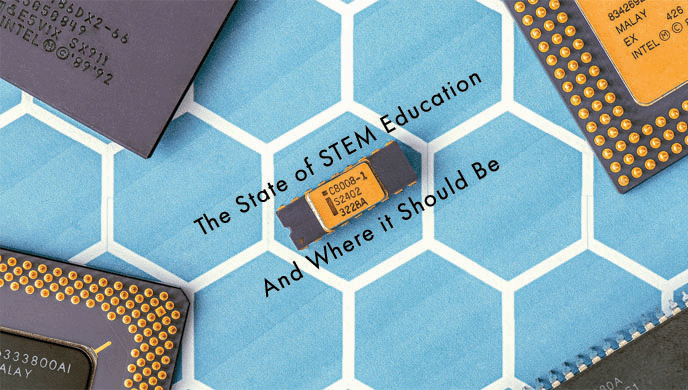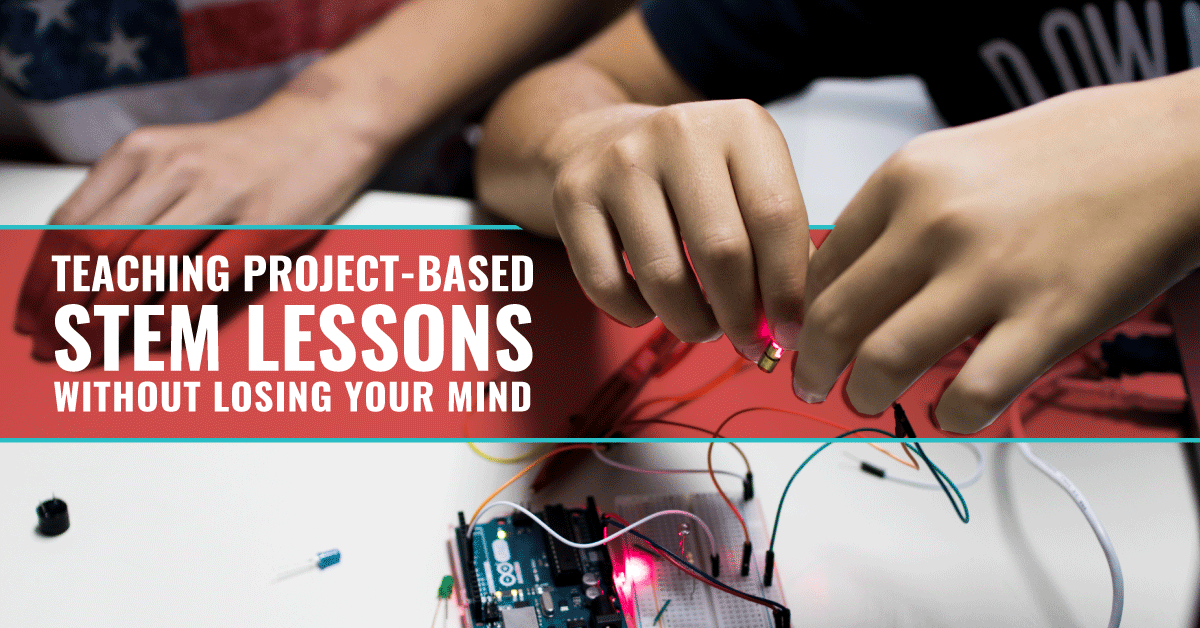The truth is, millions of parents every year surrender to the realization…
“My child is more technologically advanced than I am”
It’s okay to admit!
Often wherever you find a parent troubleshooting a computer issue…
nearby is a growingly impatient child that kicks them out of the seat and solves the issue!
This difference in parents and children’s understanding of technology is often a comical conversation around the dinner table. What isn’t funny is the reality that millions of children are missing out on critical years of development in STEM education due to parents and teachers having little to no experience in STEM topics.
Our government has done our youth a disservice when it comes to preparing them to make a difference in our economy!
“In 2012, workers in STEM related fields accounted for only 5% of the nation’s labor force but were responsible for over 50% of its sustained economic expansion (1).”
STEM work is important, and progress is certainly being made, but within the next decade it is estimated that there will be close to 1 million job vacancies in the STEM fields alone because the demand for people with STEM backgrounds will not be met (2).
Consider how many potential inventions and discoveries will be lost if a million more people could be working on building the next transformative technology, but are not.
But what can be done to make more students interested in and prepared for a STEM education?
The short answer: rethink and reform our k-12 education system.
K-12 education plays an enormous role in the development of our future scientists and engineers, in fact, “several reports have linked K-12 STEM education to continued scientific leadership and economic growth in the United States” (3).
It stands to reason that how students learn about science throughout their formative years would impact their success in college, but many institutions are not recognizing this seemingly obvious truth.
Here are some important facts:
- Research conducted in 2013 by the National Math + Science Initiative (NSMI) showed that only 44% of high school graduates are ready for college-level math and only 36% are ready for college level science.
- Only 35% of eighth graders performed at proficient levels in mathematics and only 32% were proficient in science.
These numbers are alarmingly low compared to the rest of the developed world,
and they help explain why we are not creating as many STEM majors as we could be, and also how ineffective our educational systems are (4). We should strive to help our children learn more, and right now we are struggling to do that.
K-12 STEM education is clearly an issue but how can it be improved?
2 primary components need to be addressed:
- How do we interest more children in going into STEM fields
- How do we best equip them to succeed.
Even though these may seem like two very distinct goals at first glance they are actually very related. The more interest a child has in a subject the more likely he/she is to pursue it independently. If a child becomes enthralled by the nuances of a topic like biology and spends more time reading about it, this child is far more likely to succeed in biology courses.
A study recently conducted actually found that the most important determinant of success in college environmental science courses was, unsurprisingly, the level of interest the students had in the subject material (5).
Even though there are definitely changes that could be made within the system specifically to help students succeed, if we can get them interested enough those changes may not be needed.
This is why making our students passionate is the best way to take on this problem!
But how do we make them passionate?
To help make our children more interested in STEM fields and more curious about science in general, many experts say that we need to “change the classroom experience” (6).
STEM subjects can be intimidating to many students because they are difficult for them to relate to.
For example, if a student is learning about engineering it can be easy for them to get lost in abstractions and feel disconnected from what they are learning. Basically they get bogged down in theory, and do not see how it applies to their universe.
But, what happens when the learning is taken outside of the classroom, away from complicated theory, and into reality?
What happens is students learn more, they become more interested, and they have more fun.
Here’s an example:
For engineering an example of bringing the theory back down to a familiar reality could be something like building a piece of technology, say a simple robot.
There are plenty of robots that are easy enough for children to construct but still difficult enough to challenge them!
Learning is not supposed to be a cakewalk, but it is supposed to be graspable.
Exercises like this give children a physical connection to the theories they are learning and allow them to learn through touch, in addition to their other senses.
Many studies have shown that the best way to learn anything is to experience it through as many sensory mediums as possible (7).
Activities like this also enhance problem solving capability and team-working skills, two very important elements of success that are often underdeveloped. Maybe best of all though is that this is, according to recent research, the most effective way to engage a classroom (8).
On-going research on hands-on-learning methods is making this even more obvious. Purdue even published a study titled “Hands-on projects may be best way to teach engineering and technology concepts” where they found that students who learned solely from a text-book did not grasp the concepts nearly as well (9). This approach keeps students interested, engaged, and helps them learn more than they could without it.
When Creation Crate was started we not only saw an opportunity to create a curriculum that supported hands on learning, but we saw an opportunity to make a traditionally boring and complex subject exciting and simple. We see that kids want to understand how the information is relevant to their lives and the lives of those around them. By taking advantage of this resource, schools and parents can give children the lessons that have the largest impact on the opportunities available in their future.
References:
- http://www.forbes.com/sites/forbesleadershipforum/2012/07/09/america-desperately-needs-more-stem-students-heres-how-to-get-them/#3725e03c28ea
- https://www.whitehouse.gov/sites/default/files/microsites/ostp/pcast-engage-to-excel-final_2-25-12.pdf
- http://www.nap.edu/read/13158/chapter/3
- https://www.nms.org/AboutNMSI/TheSTEMCrisis/STEMEducationStatistics.aspx
- http://serc.carleton.edu/earth_rendezvous/2016/program/talks/fridayA/136614.html
- http://www.usnews.com/opinion/articles/2013/11/11/how-to-get-middle-and-high-school-students-interested-in-stem
- http://faculty.ucr.edu/~aseitz/pubs/Shams_Seitz08.pdf
- https://thejournal.com/articles/2016/06/07/national-survey-reveals-students-want-handson-realworld-stem-education.aspx
- https://news.uns.purdue.edu/x/2009a/090128DarkStudy.html




